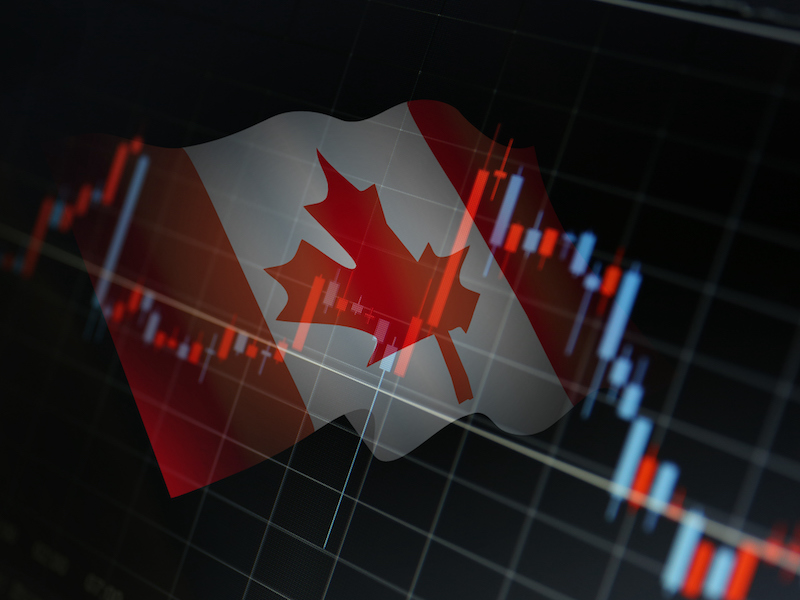
Canada’s resource-rich economy well positioned for 2024
Tangible assets provide a hedge against diminishing purchasing power, says Lisa Conroy of Connor, Clark & Lunn Investment Management
- Featuring: Lisa Conroy
- January 23, 2024 February 7, 2024
- 13:01

(Runtime: 5:00. Read the audio transcript.)
Oligopolistic markets, attractive valuations and an economy rich in resources are all positive signals for Canada over the medium term, says Lisa Conroy of Connor, Clark & Lunn (CC&L) Investment Management.
The product specialist on CC&L’s Fundamental Equity team said there are short-term cyclical challenges on the horizon, but Canada’s equity market looks well positioned to meet those challenges as we look through this period of slower growth and into the next business cycle.
“Canada looks very cheap on an absolute basis, as well as on a relative basis compared to the United States,” she said. “If you go back to the ’60s, using price to earnings ratio, Canada has only looked this cheap a couple of other times.”
And while inflation is expected to continue easing over the short term, structural pressures — from deglobalization to fiscal excess to geopolitical conflicts — could surprise markets by pushing inflation higher. In the coming business cycle, she said, Canada’s higher-than-average reliance on resources should serve it well.
“In a higher-inflation environment, hard assets, including commodities, typically outperform,” she said. “These tangible assets are a good store of intrinsic value that often provide a hedge against diminishing purchasing power.”
On top of that, a number of Canadian sectors, such as rails, telecommunications, grocery, banks and waste collection, are oligopolistic, she pointed out.
“This is an attractive characteristic heading into a higher-inflationary environment,” she said. “These types of market structures create pricing power and provide companies the ability to pass through inflation.”
A tougher year for growth
Conroy said that while 2023 was a year of positive surprises, nominal and real GDP are likely to trend lower in 2024.
“We’ve yet to see the full impact of higher interest rates. And as a result, growth in 2024 should be slower than what we saw in 2023,” she said. “That creates a more challenging backdrop for companies to earn revenue.”
Specifically, she is concerned about the Canadian consumer, who is saddled with the highest debt-servicing costs since the 1990s.
“Canadian consumers carry a high debt load as a percent of disposable income,” she said. “We expect consumer spending should contract. And companies in sectors directly exposed to the health of the consumer will be impacted.”
That includes consumer discretionary companies that manufacture items like cars, clothing and household luxuries.
Names she likes
Conroy looks for resilient businesses with strong free cash flow. Toronto-based Thomson Reuters is one company that fits the bill. The company, best known for its news business, is also a market leader in services and software for law and accounting firms.
“This is sticky business. It’s long-term contracts. It creates high levels of recurring revenue and the resilience to grow regardless of what the economy does,” she said. “They also have a clean balance sheet and are well positioned for M&A.”
Saint-Laurent, Que.-based Stella-Jones is another example of a resilient business, she said. The manufacturer of wood products such as railway ties and utility poles generates high free cash flow and will benefit from efforts to update infrastructure in the U.S.
“Their utility-pole business should generate 20% growth over the next few years, irrespective of what the economy does,” she said.
Toronto-based Celestica Inc., manufacturer of cutting-edge hardware for industries including networking, computing and communication, will benefit from the lucrative generative artificial intelligence theme, she predicted, with double-digits earnings growth expected over the next two years.
“They have established competency in several high-demand product areas,” she said. “A third of their revenue is directly exposed to hyperscalers in the U.S., including Amazon and Meta. And as these companies need to enhance their computing power to integrate generative AI, they’ll need Celestica’s hardware.”
She also likes Saskatoon, Sask.-based Cameco Corp., one of the largest uranium producers globally. It will benefit from the decarbonization trend as it supplies key inputs for the nuclear energy industry.
“Through their recent acquisition of Pennsylvania-based Westinghouse Electric Company, which builds infrastructure needed for nuclear power plants, they have great exposure to this thematic, and we believe they will be able to drive superior earnings growth this year,” she said.
In the more traditional energy camp, she likes two Calgary-based companies: Tourmaline Oil and ARC Resources Ltd., both of which are poised to benefit from the expansion of natural gas facilities over the next few years.
“This will over double the natural gas capacity in North America, and will drive incremental demand as Europeans are looking to reduce their reliance on Russian natural gas,” she said. “Overall, it will be positive for North American gas prices.”
With both positive and negative trends taking shape, Conroy said the situation calls for careful stock picking.
“We do believe active management is going to be increasingly important as growth becomes more scarce,” she said.
**
This article is part of the Soundbites program, sponsored by Canada Life. The article was written without sponsor input.
